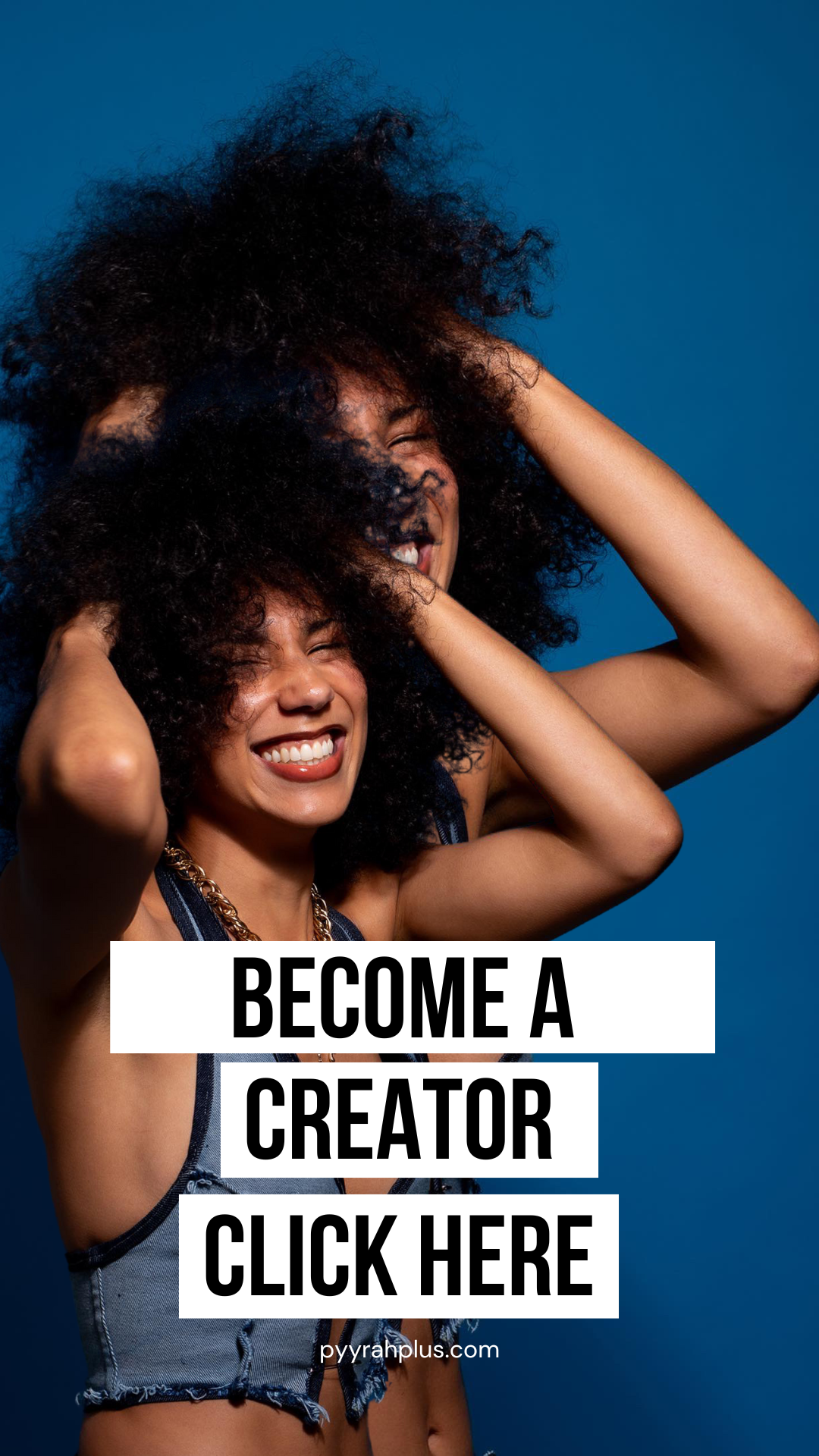In the gleaming offices of a content studio one morning, a team of editors gathered around a screen, watching intently as Maisie Williams poured her heart out in an emotional moment. Within days, this carefully curated clip would capture 7 million views, demonstrating the profound impact of strategic short-form content. Such moments of viral success aren’t mere accidents—they’re the product of a meticulous approach to content transformation that balances artistic intuition with data-driven precision.
The landscape of digital content has evolved far beyond the simple act of slicing long-form interviews into bite-sized pieces. Today’s successful content creators understand that short-form video isn’t merely a promotional tool but rather an art form in its own right, demanding its own sophisticated approach to storytelling. As attention spans continue to compress in our digital age, the ability to capture and maintain viewer interest within the first critical seconds has become paramount.
Consider the typical content consumer’s journey: scrolling through their feed, thumb hovering over the screen, deciding in mere milliseconds whether to engage or continue their endless scroll. In this environment, the traditional rules of content creation have been rewritten. The most successful creators have learned to treat each platform as its unique ecosystem, understanding that what resonates on Instagram might fall flat on LinkedIn, and what goes viral on TikTok might barely register on other platforms.
This evolution has given rise to a new philosophy in content creation—one that prioritizes platform-specific optimization over universal repurposing. Gone are the days when simply trimming a long-form video into shorter segments would suffice. Today’s leading content studios employ dedicated teams of editors who approach each piece of content as a potential goldmine of stories, each requiring its own careful cultivation to reach its full potential.
The transformation has been particularly fascinating in the podcast space, where traditional audio-first content has evolved into a multi-platform phenomenon. Studios now approach recording sessions with a “short-form first” mindset, capturing not just the primary content but also the intimate moments before and after, the spontaneous laughter, the unscripted authenticity that often resonates more deeply than the planned discussion.
This sophisticated approach to content creation reflects a deeper understanding of modern audience behavior—one that recognizes that while audiences might discover content through short-form platforms, they often develop deeper connections through long-form engagement. It’s a delicate balance of immediate impact and lasting impression, requiring both technical precision and creative intuition to execute effectively.
As we delve deeper into the strategies and techniques that drive successful short-form content, we’ll explore how leading creators are pushing the boundaries of what’s possible in this evolving medium, constantly testing, iterating, and innovating to stay ahead of platform changes and audience preferences. The future of content creation lies not just in adapting to these changes but in anticipating them, creating content that resonates across platforms while maintaining the highest standards of quality and engagement.
In the dimly lit editing suite of a major content studio, a revelation occurred that would transform their entire approach to digital storytelling. The team had spent countless hours meticulously cutting down long-form interviews into shorter segments, following the conventional wisdom that shorter attention spans demanded abbreviated content. Yet something wasn’t clicking—the engagement metrics told a story of viewers who weren’t just watching less, they were connecting less.
This moment of clarity sparked a fundamental shift in philosophy: short-form content isn’t simply a condensed version of longer material, but rather an entirely distinct art form demanding its own creative approach. Just as haiku masters understand that their craft involves more than merely writing fewer words, successful short-form content creators recognize that their medium requires a unique artistic vision.
The contemporary approach to short-form content reflects this deeper understanding. Rather than viewing these brief segments as mere promotional tools—digital breadcrumbs leading to longer content—successful creators treat each piece as a self-contained story worthy of its own artistic merit. This shift in perspective has profound implications for content strategy.
Consider the platform-specific nature of modern content consumption. A LinkedIn user scrolling through their feed during their morning commute brings different expectations and needs than someone browsing Instagram during their lunch break. This reality demands not just different content, but different storytelling approaches. What works as a compelling narrative on one platform might fall flat on another, necessitating a sophisticated understanding of platform-specific audience behaviors and preferences.
The emphasis on organic growth through strategic content distribution reflects this nuanced understanding. Rather than pushing audiences toward long-form content through aggressive calls-to-action, modern content creators focus on building genuine engagement within the short-form format itself. This approach recognizes that audiences who connect with content naturally are more likely to seek out additional material on their own terms.
Perhaps most surprisingly, this philosophy has led to a counter-intuitive discovery: sometimes the most effective short-form content isn’t derived from long-form material at all. The “short-form first” strategy, where content is conceived and created specifically for brief formats, has emerged as a powerful approach. Behind-the-scenes moments, spontaneous interactions, and unscripted authenticity often resonate more deeply than carefully planned segments.
This evolution in content philosophy mirrors broader changes in digital consumption patterns. Just as streaming services transformed how we consume television, short-form platforms have created new ways of engaging with content. Success in this environment requires understanding that each piece of content, regardless of length, must serve a distinct purpose and provide value on its own terms.
The modern content creator must therefore approach their craft with the precision of a surgeon and the vision of an artist. Every second counts, every frame matters, and every piece of content must be crafted with a deep understanding of its intended platform and audience. This isn’t just about making content shorter—it’s about making it smarter, more engaging, and more attuned to the ways modern audiences consume and connect with digital media.
In the fast-paced world of digital content, the difference between viral success and obscurity often comes down to a matter of seconds—or more precisely, the first two seconds of a video. Picture a dimly lit editing suite, where a seasoned editor hovers over their workstation, meticulously fine-tuning the opening frames of what would become a 7-million-view clip of Maisie Williams. The success of this emotional moment wasn’t left to chance; it was orchestrated through a deep understanding of viewer psychology and precise editing techniques.
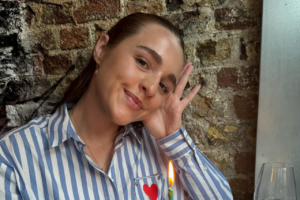
The modern attention span operates like a well-trained bouncer at an exclusive club—making split-second decisions about what gets in and what gets scrolled past. Those crucial first 1.5 to 2 seconds serve as a digital handshake with the viewer, determining whether they’ll stay for the full experience or continue their endless scroll through the content abyss. This reality has fundamentally transformed how content must be structured.
Consider the traditional storytelling arc—beginning, middle, and end—now compressed into mere moments. The luxury of gradual build-up has been replaced by the necessity for immediate impact. Content creators have learned to become narrative archaeologists, often excavating the most compelling moments from the middle of a conversation and transplanting them to the opening seconds. This strategic repositioning of hooks isn’t just about grabbing attention; it’s about making a promise to the viewer that the next few moments of their time will be well spent.
The architecture of effective short-form content follows a precise blueprint. After the initial hook, every subsequent second must maintain that momentum while building toward a satisfying conclusion. It’s a delicate balance, similar to crafting a perfect espresso shot—too rushed and you lose the depth, too lengthy and you lose the impact. Each frame must serve a purpose, each transition must feel intentional, and each moment must contribute to the overall narrative.
However, the pursuit of these perfect moments presents a unique challenge: maintaining quality standards while meeting the demanding pace of modern content consumption. Unlike the automated approach of AI-driven editing tools that simply slice content into predetermined chunks, successful creators understand that not every piece of long-form content will yield the same number of compelling short-form segments. Some conversations might produce twenty remarkable clips, while others might only offer two genuinely engaging moments—and that’s perfectly acceptable.
The key lies in understanding that forcing content to fit arbitrary quotas often results in what industry insiders call “washy, unproduced points”—clips that fail to deliver either value or entertainment. Instead, leading content creators focus on crafting what they call “complete moments”—segments that leave viewers with either a new insight, an emotional connection, or a compelling reason to engage further.
This approach requires a level of editorial discipline that many find challenging to maintain in today’s high-volume content environment. Yet the most successful creators understand that in the world of short-form video, quality isn’t just about high-resolution footage or perfect lighting—it’s about creating moments that respect the viewer’s time while delivering genuine value, whether that comes in the form of entertainment, education, or emotional resonance.
The art of short-form video creation has evolved into a sophisticated dance between technical precision and creative intuition. Every edit, every transition, and every frame must serve the dual purpose of maintaining viewer engagement while building toward a meaningful conclusion. In a digital landscape where attention is the most precious currency, mastering this dance isn’t just about creating content—it’s about crafting experiences that resonate in the brief moments we have to make an impact.
In the ever-evolving landscape of social media, success lies not in being everywhere, but in being everywhere purposefully. Like a master chef preparing the same ingredient differently for distinct palates, modern content creators must understand that each platform demands its own unique recipe for engagement.
Consider Instagram, the visual feast where aesthetics meet authenticity. Here, content centered around health, mental wellness, and relationships flourishes in ways that might seem surprising to the uninitiated. A clip discussing mindfulness practices or relationship dynamics that might get lost in the professional atmosphere of LinkedIn can find its spiritual home among Instagram’s wellness-conscious audience. The platform’s emphasis on visual storytelling and emotional connection creates the perfect environment for these intimate conversations to resonate and spark meaningful engagement.
LinkedIn, by contrast, operates as the boardroom of social media—a space where professional development and entrepreneurial insights reign supreme. Here, content about work-life balance and business strategy finds its most receptive audience. A conversation about startup challenges or leadership principles that might feel out of place on TikTok can ignite vigorous discussion and sharing among LinkedIn’s professionally-minded community. The key lies in understanding that LinkedIn users aren’t just scrolling—they’re investing in their professional growth.
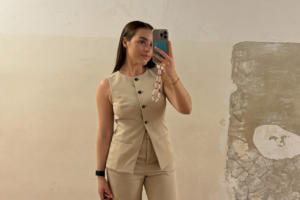
Then there’s TikTok, the platform that defies easy categorization. Its algorithmic alchemy can turn a 10-minute emotional confession into a viral sensation with millions of views, while equally celebrating a 2-second behind-the-scenes blooper. The platform’s versatility makes it a fascinating playground for content experimentation, but it also demands an understanding of its unique rhythm and pace. Success on TikTok often comes from embracing its unpredictability rather than fighting against it.
The fatal flaw in many content strategies lies in the temptation to adopt a one-size-fits-all approach. The practice of taking a single piece of content and blindly redistributing it across all platforms—what industry veterans often call “spray and pray”—ignores the distinct cultural ecosystems that exist within each platform. It’s akin to serving the same dish at a food truck, a fine dining restaurant, and a casual café—the core ingredients might be excellent, but the presentation and preparation need to match the environment.
Smart content creators approach each platform as a unique venue requiring its own performance. They understand that success comes from respecting the native preferences and behaviors of each platform’s audience. This might mean taking the same core message and presenting it through different lenses: a polished professional insight for LinkedIn, an emotionally resonant story for Instagram, and an authentic, unvarnished moment for TikTok.
The most sophisticated content strategies go beyond simple platform optimization to create what might be called “platform-native content”—material that feels so natural to its environment that viewers might assume it was created specifically for that space. This approach requires more effort than universal repurposing, but the rewards—in terms of engagement, reach, and authentic connection—far outweigh the additional investment.
In the end, mastering platform-specific optimization isn’t just about technical adjustments or format changes. It’s about understanding the unique cultural language of each platform and speaking it fluently. The most successful creators don’t just distribute content—they craft experiences that feel perfectly at home in their chosen environments, creating connections that resonate with authenticity and purpose.
In the green room of a bustling content studio, a skilled producer sits with headphones carefully positioned, fingers hovering over their keyboard. This isn’t just another recording session—it’s a live treasure hunt for moments that will resonate across digital platforms. The art of modern content production has evolved far beyond simple record-and-edit workflows into a sophisticated orchestration of technical precision and creative intuition.
The process begins long before the first social media post goes live. During recording sessions, dedicated team members operate like talent scouts in a vast arena of conversation, identifying those golden moments that have the potential to stop thumbs mid-scroll. This real-time monitoring isn’t merely about efficiency—it’s about capturing the authentic energy that often dissipates in post-production review. When a guest shares a particularly vulnerable moment or delivers an unexpected insight, the team can immediately flag it, preserving not just the content but the context that made it special.
Consider the case of a recent episode where Maisie Williams shared an emotionally charged moment. The clip, which would later amass 7 million views, wasn’t discovered through algorithmic analysis or post-production review. It was identified in real-time by a team member who recognized its raw emotional power. This human element in the production process—the ability to recognize authentic moments that will resonate with audiences—remains irreplaceable, even in our increasingly automated world.
The role of clips editors in this process cannot be overstated. These artistic technicians approach each piece of content like sculptors approaching a block of marble, seeing the potential masterpiece within the raw material. Their work goes far beyond simple cutting and trimming. They craft perfect story arcs, carefully position hooks, and ensure that each clip feels complete and satisfying, regardless of its duration.
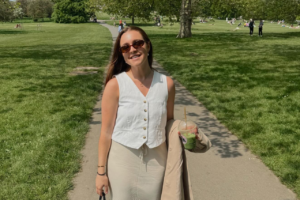
What sets premier content studios apart is their rejection of arbitrary production quotas. Unlike the assembly-line approach adopted by many content creators, where each episode must yield a predetermined number of clips, these studios embrace a quality-first philosophy. Some conversations might yield twenty compelling moments, while others might produce only two—and that’s perfectly acceptable. This flexible approach ensures that every piece of content released meets the highest standards of quality and engagement.
The testing process itself is a continuous cycle of refinement. Teams experiment endlessly with subtitle styles, seeking the perfect balance of readability and aesthetic appeal. Hook placement is analyzed and adjusted, with teams sometimes discovering that the most compelling moment works better as an opening than a conclusion. Clip duration is carefully calibrated, with the understanding that the perfect length isn’t a fixed number but rather whatever time is necessary to tell the story effectively.
Perhaps most importantly, this approach to production and quality control remains dynamic. What works today might not work tomorrow, as platforms evolve and audience preferences shift. Successful content creators maintain a state of perpetual experimentation, constantly testing new approaches while maintaining their core standards of quality.
This dedication to craft extends beyond the visible elements of production. Behind every viral moment lies hours of careful consideration: Should the subtitles be dynamic or static? Would this hook resonate more strongly at the beginning or as a reveal? Does this moment feel complete, or does it leave the viewer wanting more? These decisions, while often invisible to the casual viewer, form the foundation of content that truly connects with audiences.
The result of this meticulous approach is content that feels both polished and authentic—a delicate balance that only comes from combining rigorous quality control with genuine respect for the creative process. In a digital landscape increasingly dominated by automated tools and AI-driven editing, this human-centered approach to production stands out as a testament to the enduring value of craftsmanship in content creation.
In the sleek conference rooms of leading content studios, a quiet revolution is taking place. The traditional paradigm of creating long-form content first and then extracting short-form pieces as an afterthought has been turned on its head. This shift represents more than just a change in workflow—it’s a fundamental reimagining of how stories are told in the digital age.
The “short-form first” strategy emerged from a simple yet profound observation: some of the most compelling moments in content creation happen when the cameras are supposedly off. A guest arriving at the studio, adjusting their microphone, sharing a quiet laugh with the host—these seemingly mundane moments often carry more authenticity and relatability than the polished interview that follows. Like a photographer capturing candid shots at a wedding, content creators have learned that the magic often happens between the formal moments.
Consider a typical recording session. While the main cameras roll, capturing the planned conversation, additional cameras now document what was once considered peripheral: the nervous adjustments before going live, the genuine reactions during breaks, the unguarded moments of connection between host and guest. These aren’t mere B-roll footage anymore—they’re potentially viral content in their own right.
The integration of bloopers and unused footage represents another paradigm shift. What was once relegated to end-credit entertainment is now recognized as premium content. A guest stumbling over their words might once have been edited out; now, it might become the hook that draws viewers into a larger conversation about perfectionism and authenticity. These moments of vulnerability often resonate more deeply with audiences than polished performances.
But this approach requires more than just keeping the cameras rolling. It demands a new kind of creative sensitivity—an ability to recognize authentic moments as they happen and preserve them in a way that maintains their spontaneity while making them accessible to audiences. It’s a delicate balance between documentation and curation, between capturing raw authenticity and presenting it in a way that serves the larger narrative.
The focus on creating intimate, exclusive moments has also led to a reimagining of the production environment itself. Studios are designed not just for optimal lighting and sound, but to create spaces where genuine interactions can flourish. Green rooms become stages for impromptu conversations, makeup sessions transform into opportunities for candid reflection, and the spaces between formal segments become fertile ground for content that feels real and unmediated.
This innovative approach has profound implications for the relationship between creators and their audience. By sharing these behind-the-scenes moments, content creators invite viewers into a more intimate relationship with the creative process. It’s no longer about presenting a perfect, polished final product—it’s about sharing the journey, complete with its imperfections and unexpected moments of beauty.
The strategy has proven particularly effective in an era where audiences crave authenticity. While traditional media often presents a carefully curated facade, this approach embraces the messy reality of human interaction. It acknowledges that sometimes the most powerful stories emerge not from careful planning, but from genuine, unscripted moments of connection.
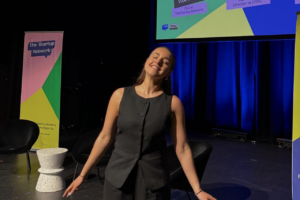
The future of content creation lies not in choosing between long-form and short-form, but in understanding how they can complement each other in service of deeper storytelling. By adopting a “short-form first” mindset while maintaining high production standards, creators can build more meaningful connections with their audiences and tell stories that resonate on multiple levels. In this new paradigm, every moment has potential, every interaction could be meaningful, and authenticity becomes the most valuable currency of all.
In the ever-evolving landscape of digital content, a revolution quietly began when someone asked a simple yet transformative question: “Why don’t podcasts have trailers like movies do?” This seemingly obvious inquiry would lead to a fundamental reimagining of how audio and video content is promoted in the digital age.
Picture a former Disney storyteller, hunched over an editing bay, applying the same meticulous attention to a podcast trailer that one might expect in a Hollywood production house. This isn’t just about cutting together highlights—it’s about crafting a narrative journey that compels viewers to invest their time and attention. The result? A new standard in content promotion that has become so influential that it’s spawned countless imitators, though few have managed to capture the magic of the original approach.
The secret lies not in the technical execution, though that’s certainly important, but in the fundamental understanding of storytelling principles borrowed from the film industry. Every trailer becomes an experiment in narrative tension, with each frame, transition, and audio cue carefully orchestrated to build anticipation. It’s the difference between simply informing audiences about upcoming content and making them feel they can’t afford to miss it.
What makes this approach truly revolutionary is its commitment to continuous experimentation. Each trailer serves as a laboratory for testing new techniques: a subtle shift in pacing here, an innovative transition there, a fresh approach to sound design that might go unnoticed by the casual viewer but contributes to the overall impact. These aren’t just promotional tools—they’re miniature masterpieces of marketing storytelling.
The impact of this approach extends far beyond mere viewer numbers. By treating promotional content with the same respect and artistic consideration as the main content, studios have elevated the entire ecosystem of digital marketing. It’s no longer acceptable to simply splice together highlights and call it a day. The bar has been raised, and audiences have come to expect—and appreciate—this higher level of craft.
Consider the transformation of a typical podcast promotion. Where once there might have been a simple collection of quotes or highlights, now there’s a carefully orchestrated journey that positions the problem, demonstrates the solution, and leaves viewers hungry for more. It’s a approach that recognizes that in today’s content-saturated world, the way you present your content is just as important as the content itself.
Perhaps most remarkably, this evolution has created a virtuous cycle of innovation. As standards rise, so too does the sophistication of audience expectations, pushing creators to experiment with new formats and approaches. The result is a constant state of creative evolution, where today’s innovative technique becomes tomorrow’s baseline expectation.
The true testament to the success of this approach lies in its ability to convert skeptics into believers. Even team members who might initially question the value of a particular episode find themselves drawn in by these masterfully crafted trailers. It’s a reminder that great promotion doesn’t just inform—it transforms perceptions and creates anticipation.
As this approach continues to evolve, it sets new standards for what content promotion can and should be. It’s no longer enough to simply announce that content exists; modern promotion must create an experience in itself, one that both satisfies and intrigues, offering immediate value while promising even more to come. In this new paradigm, every promotional piece becomes an opportunity to demonstrate not just what your content is about, but why it matters to your audience.


